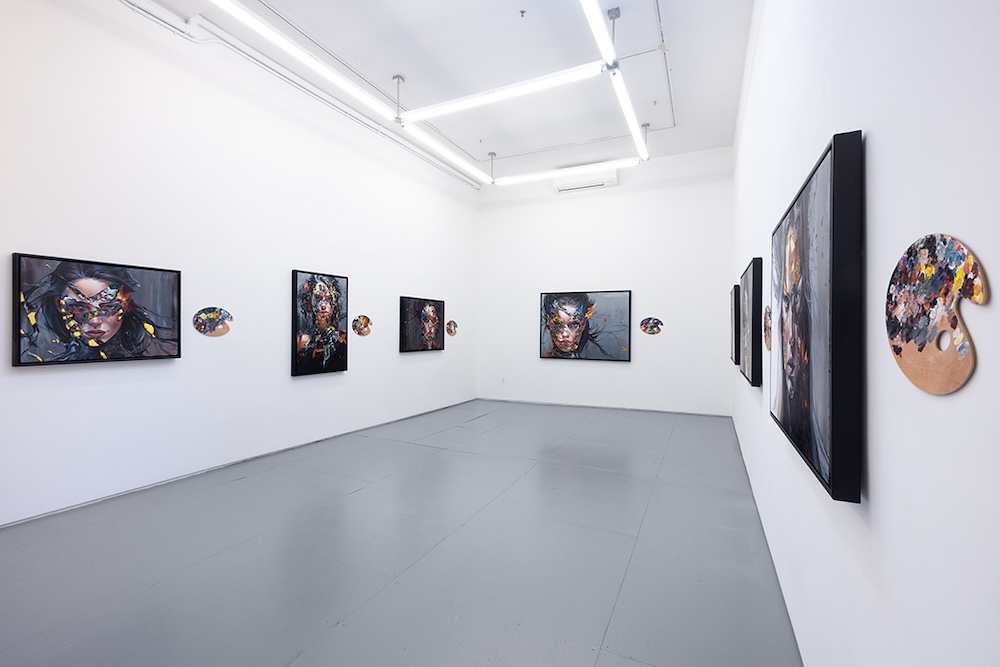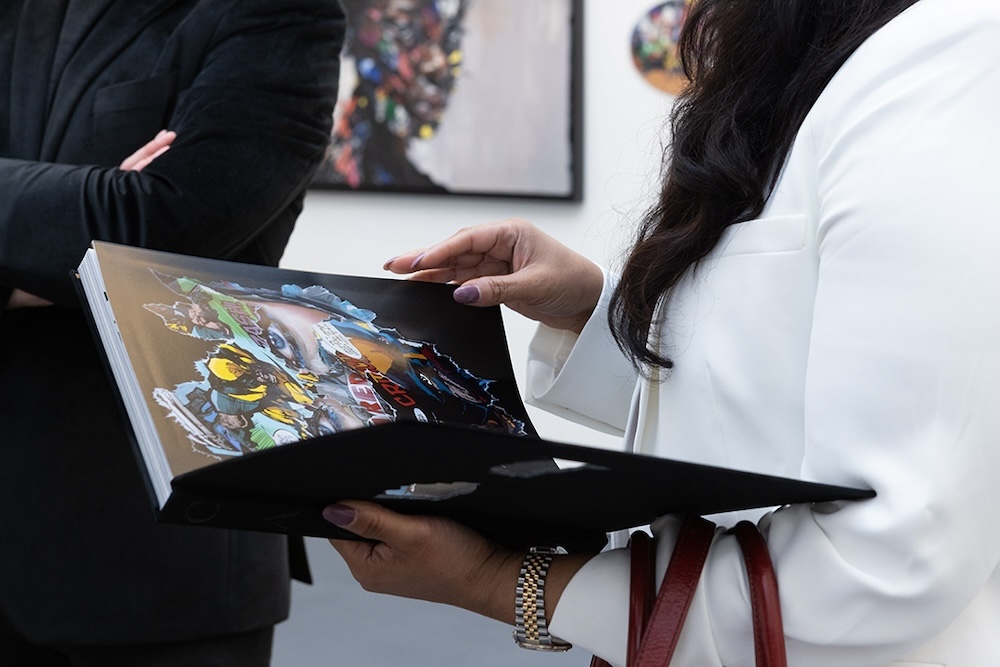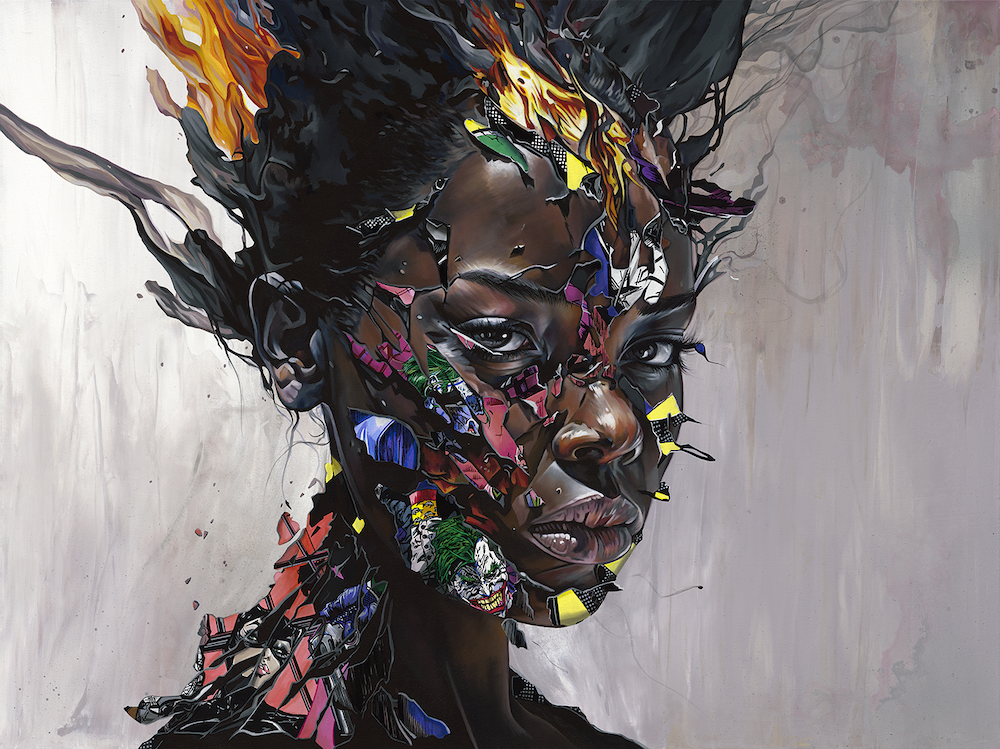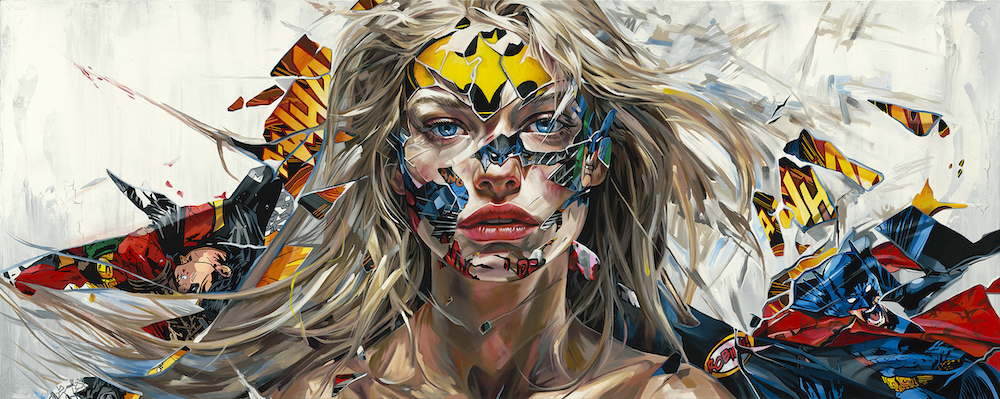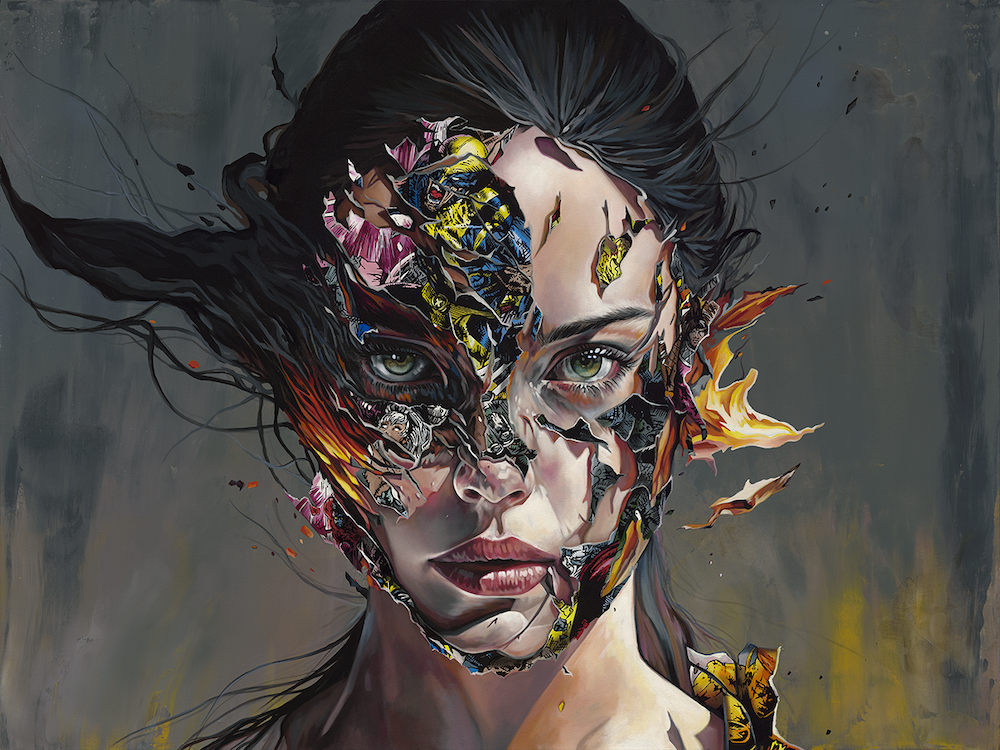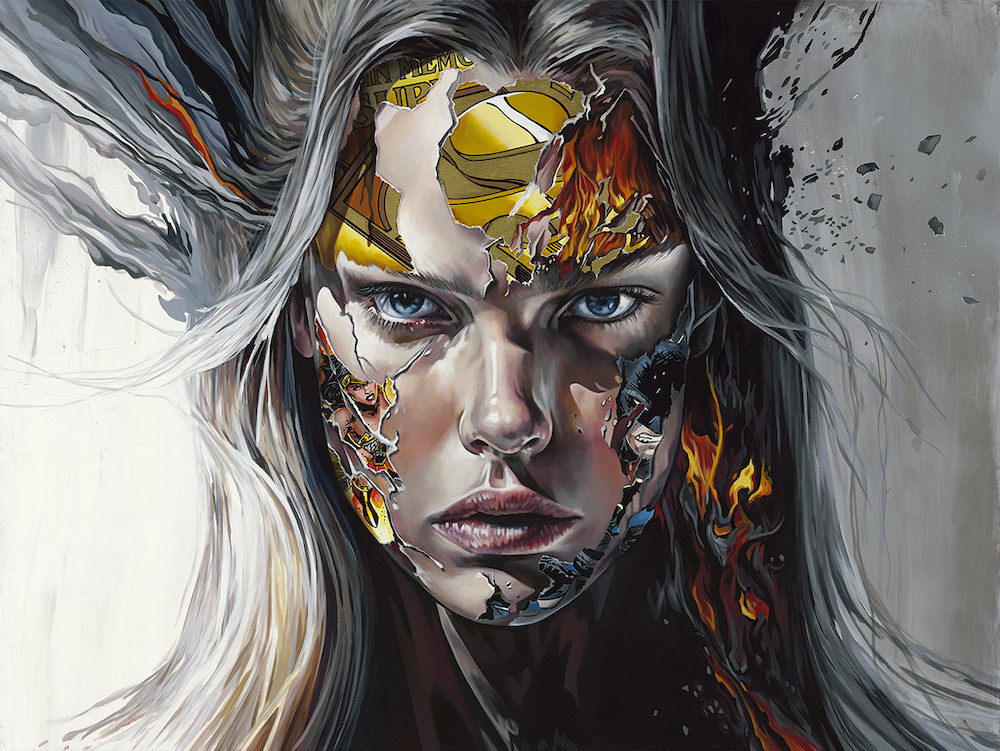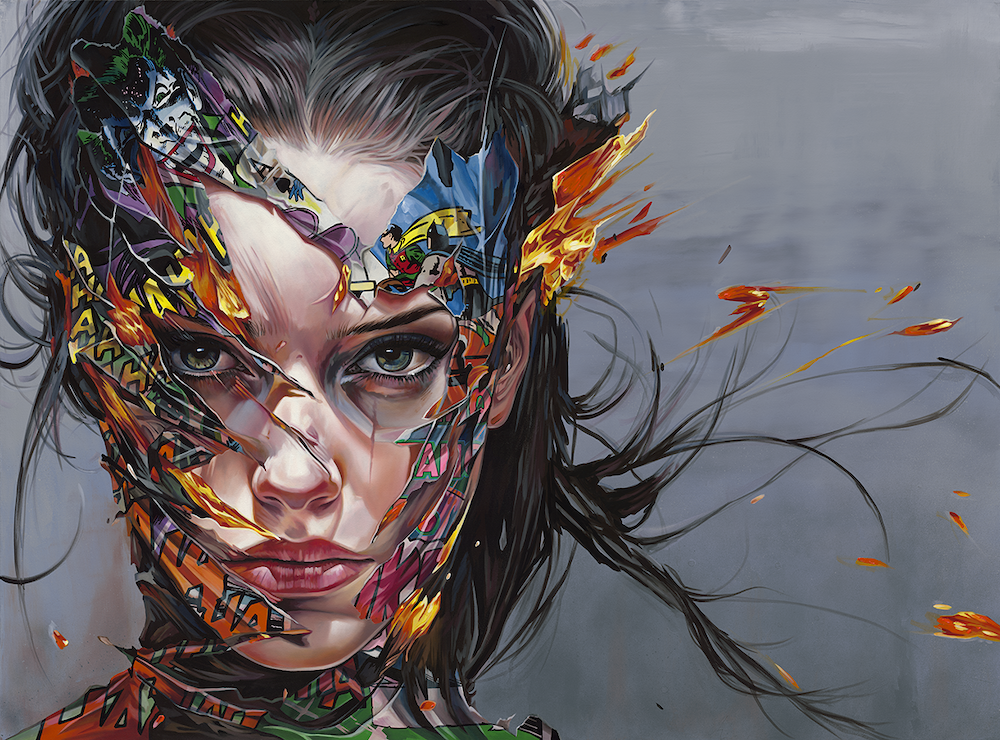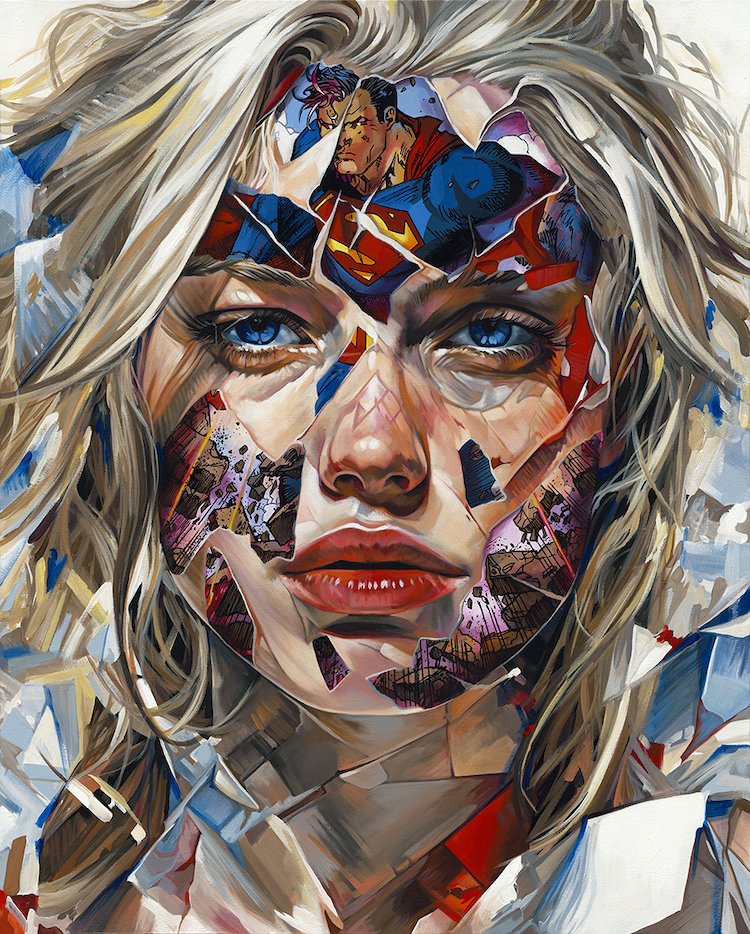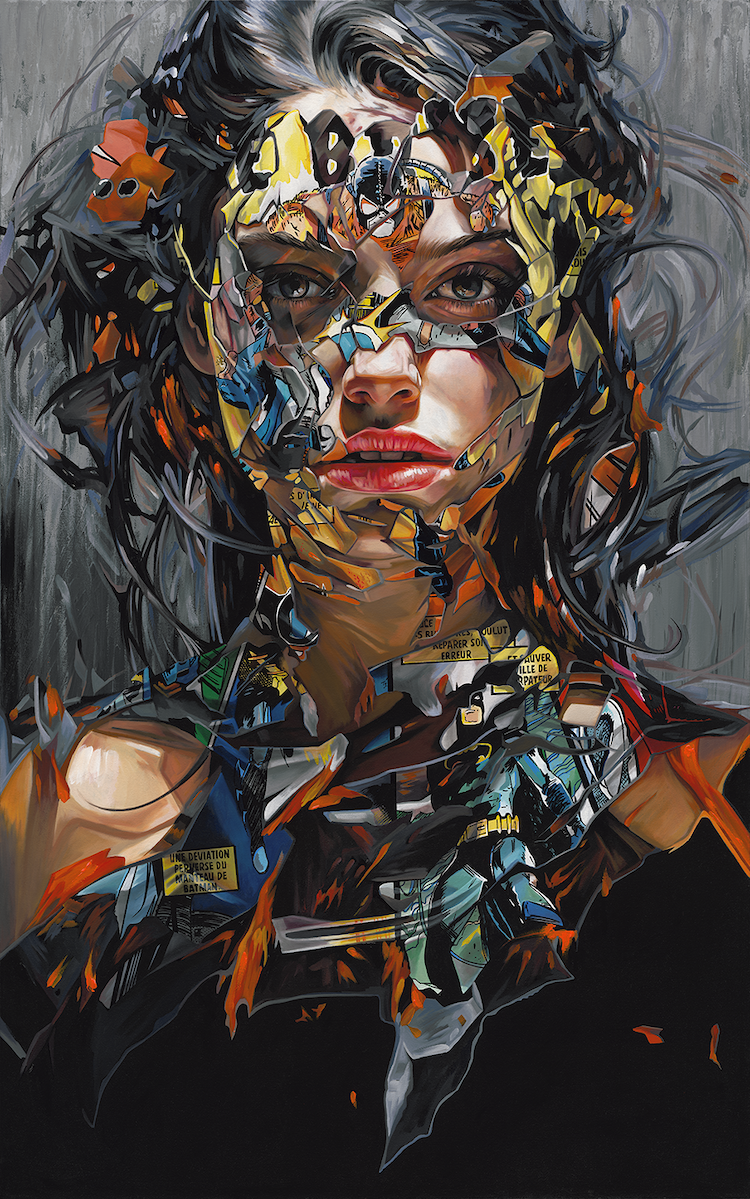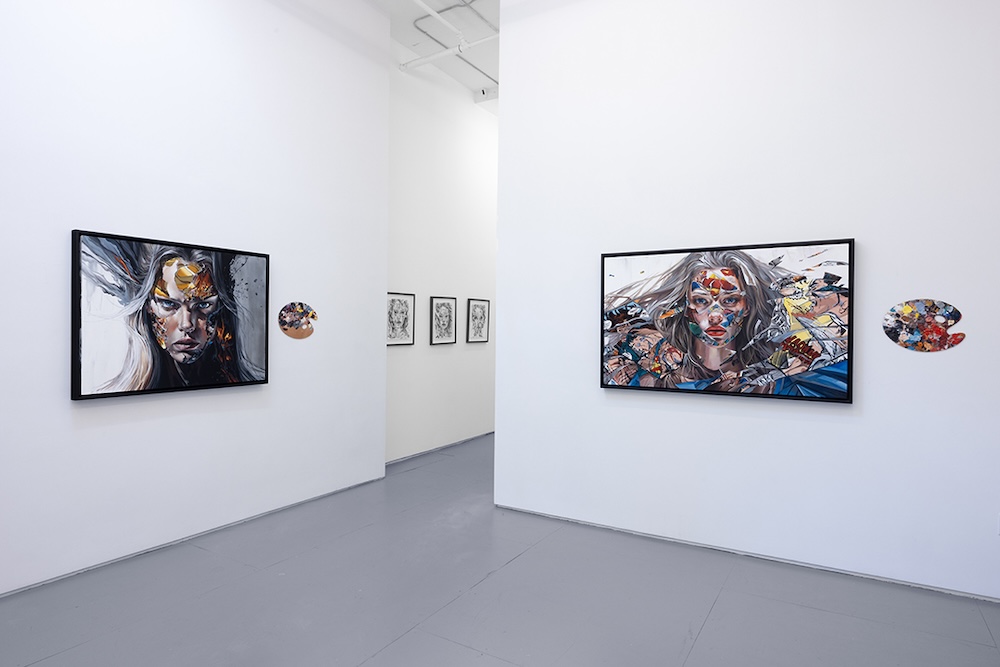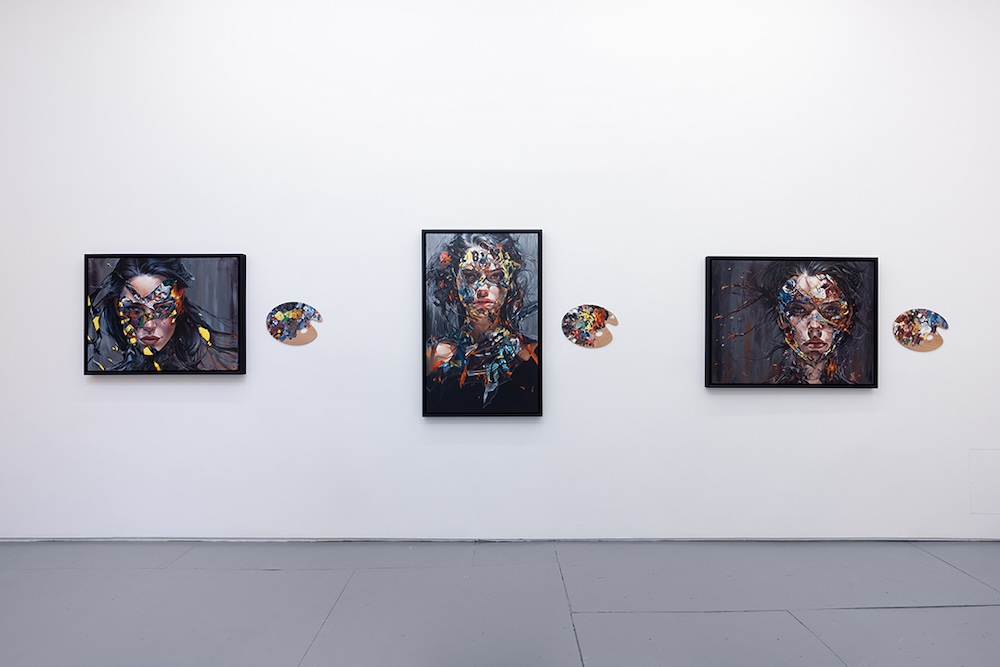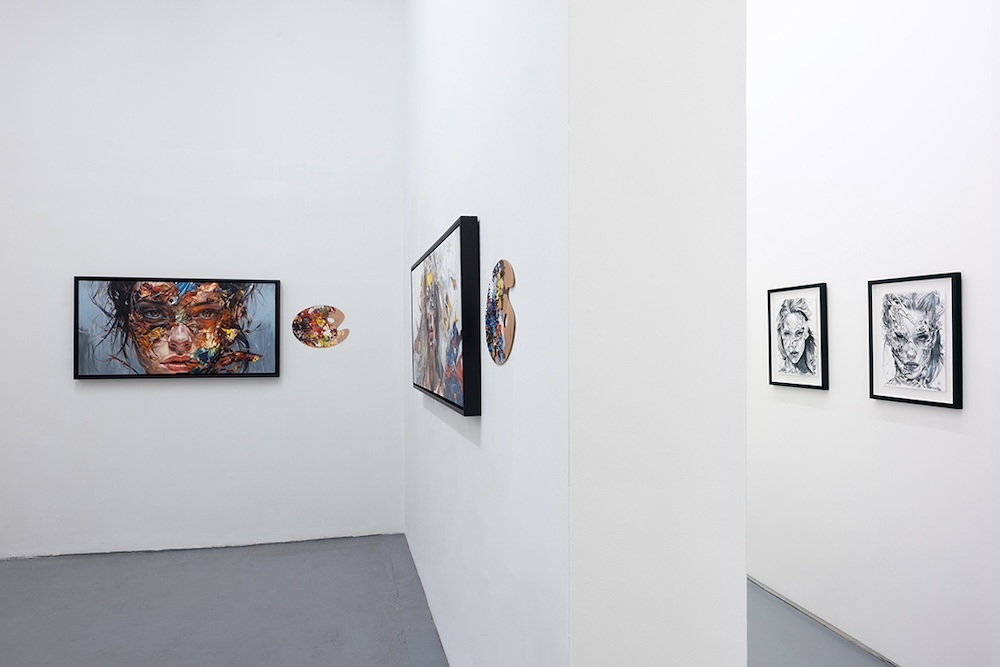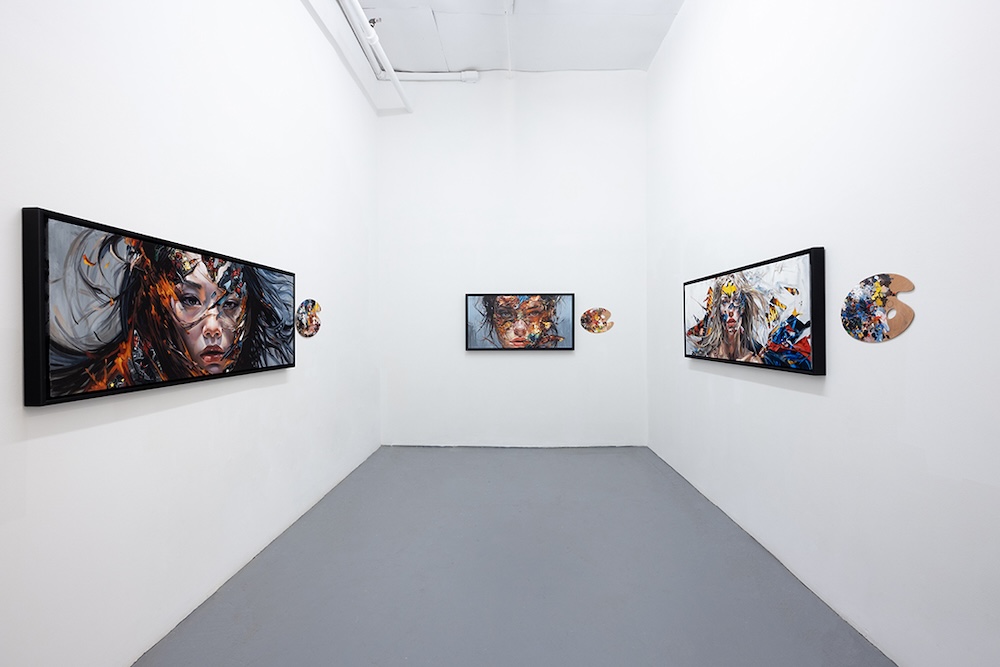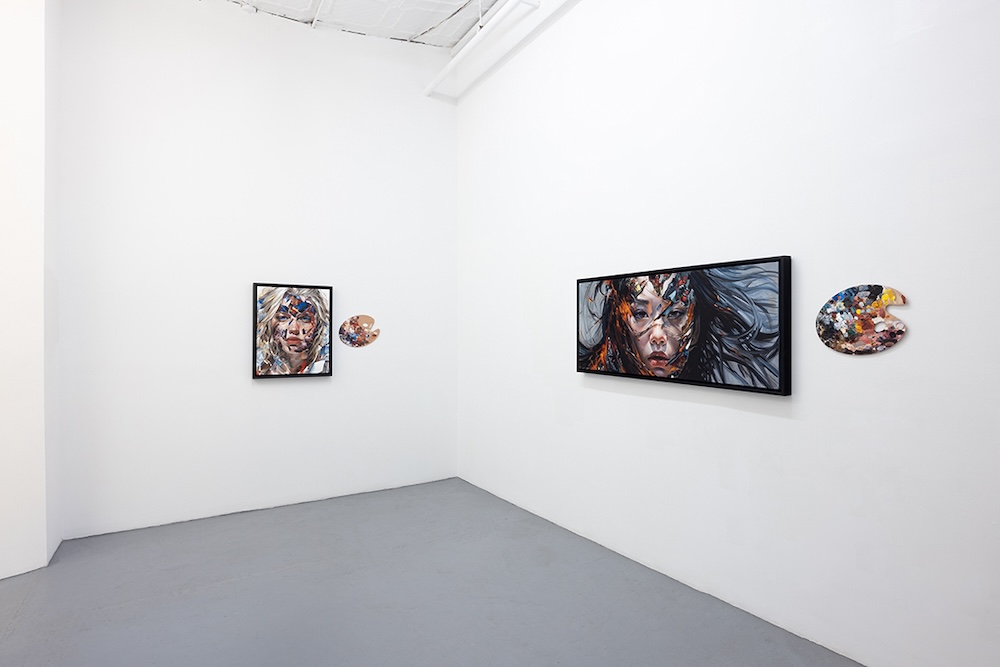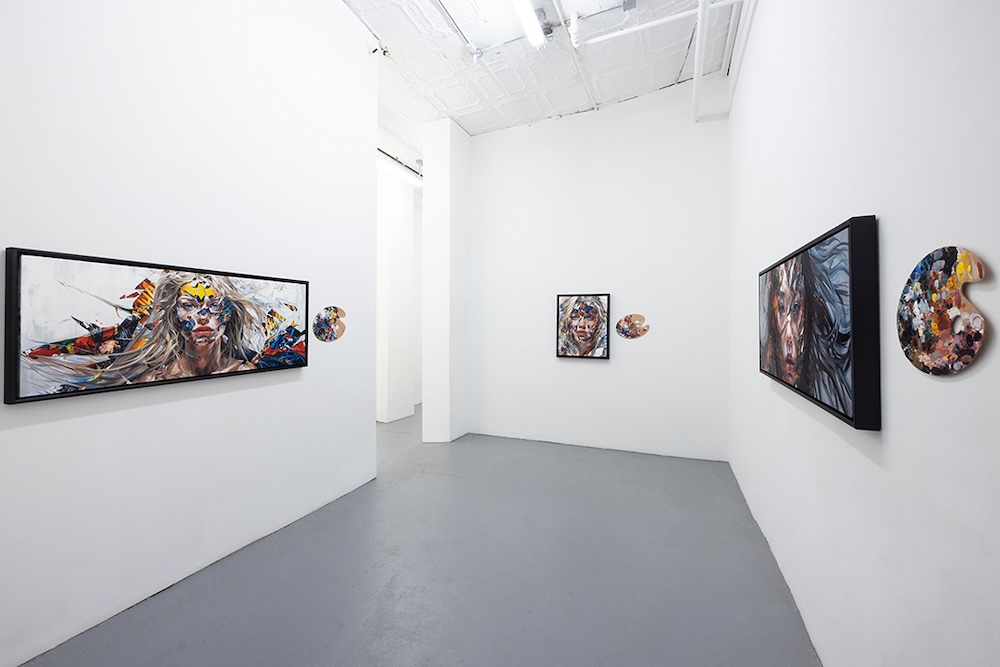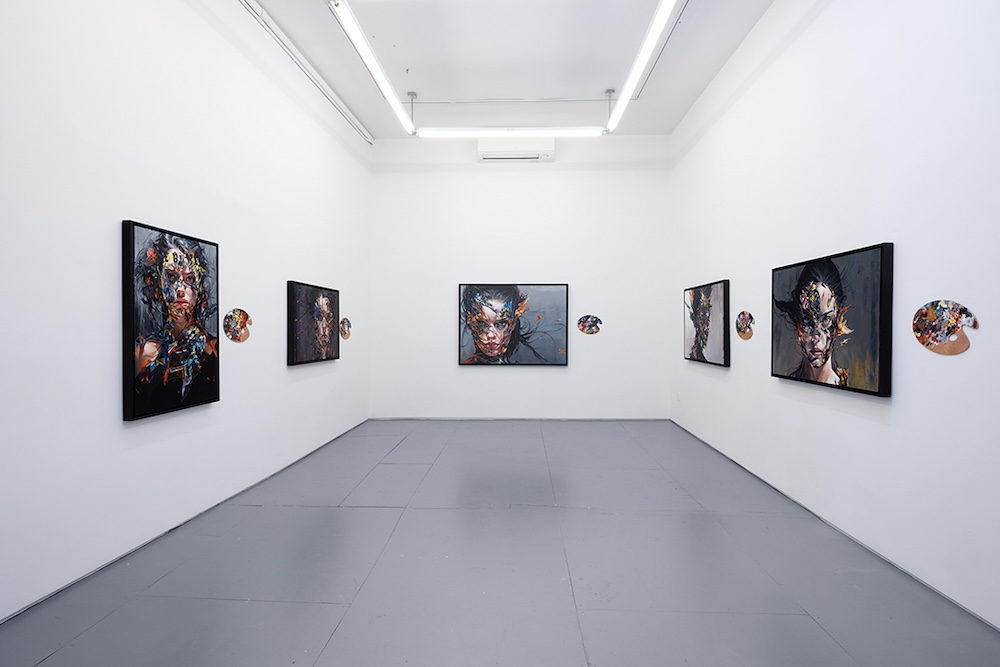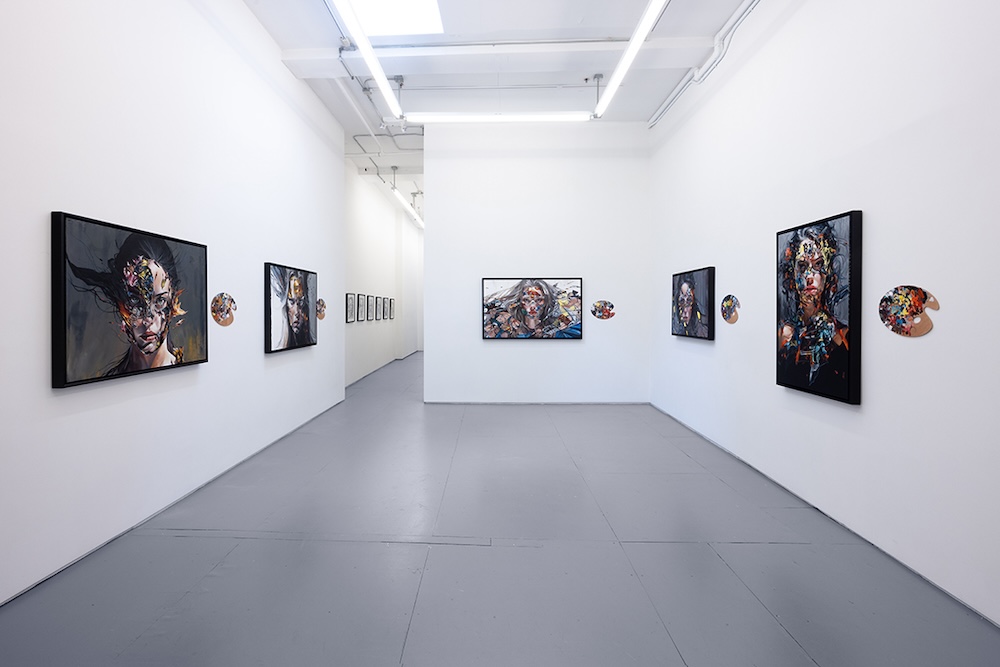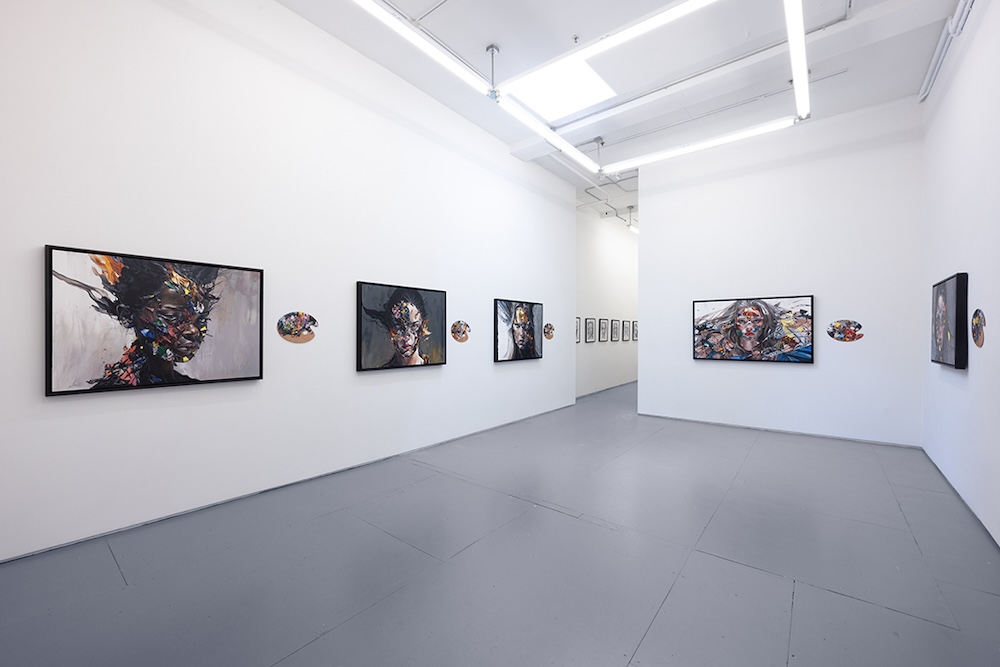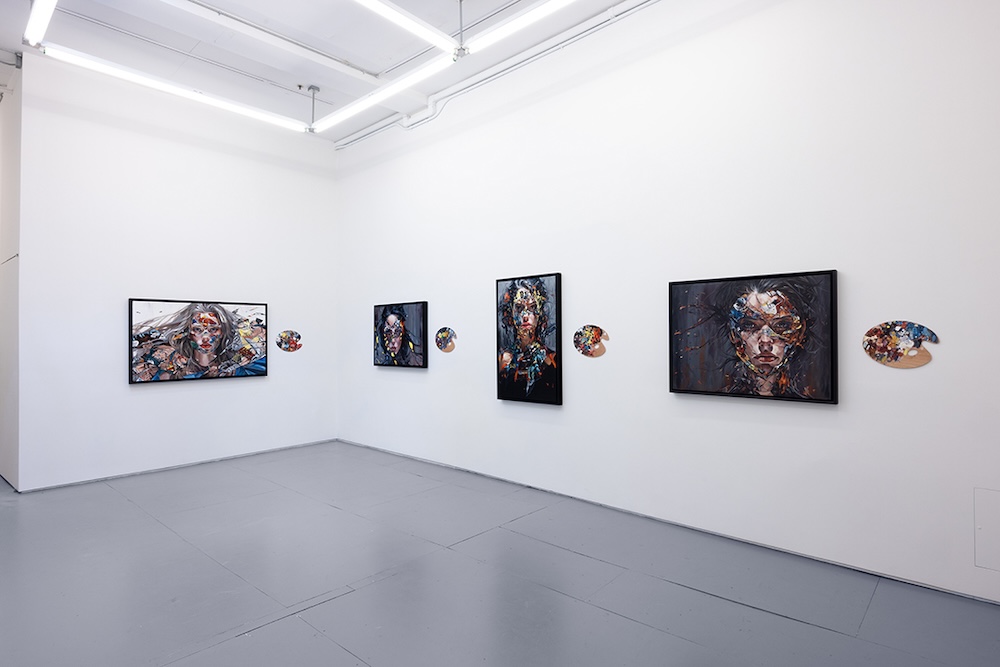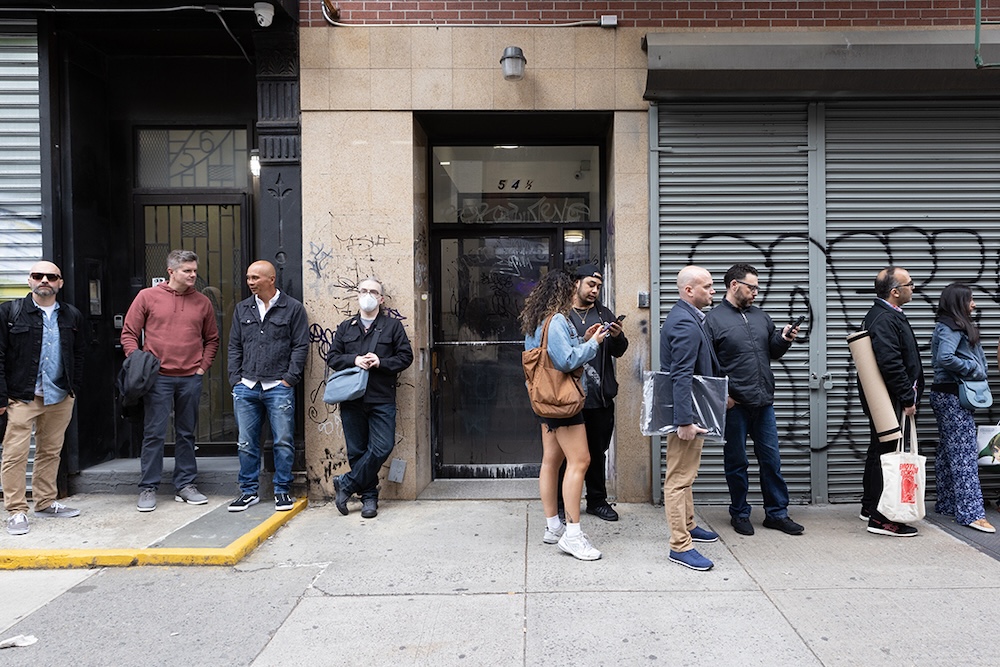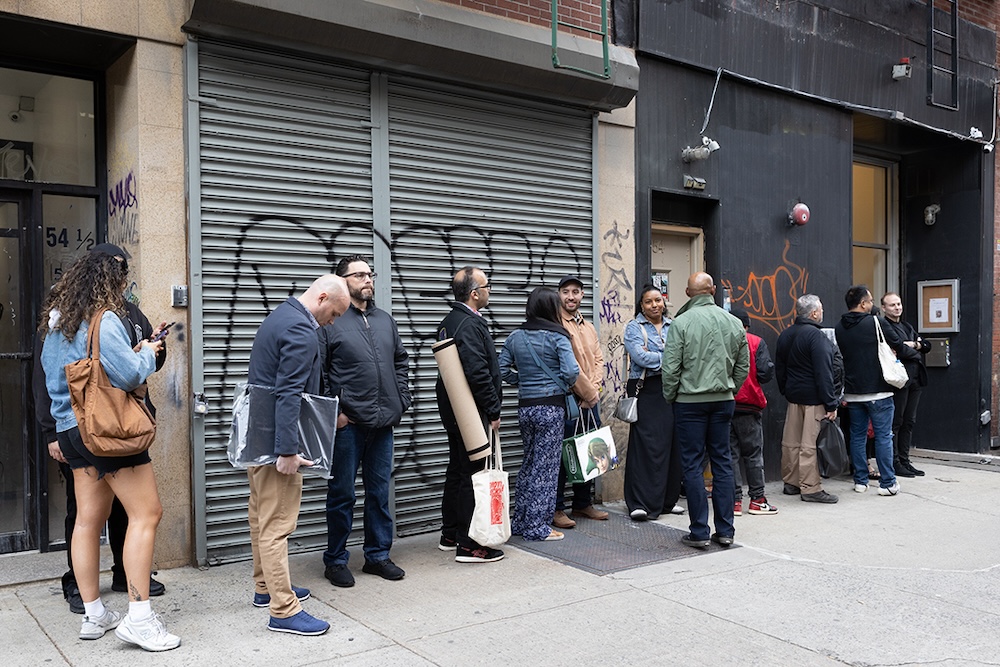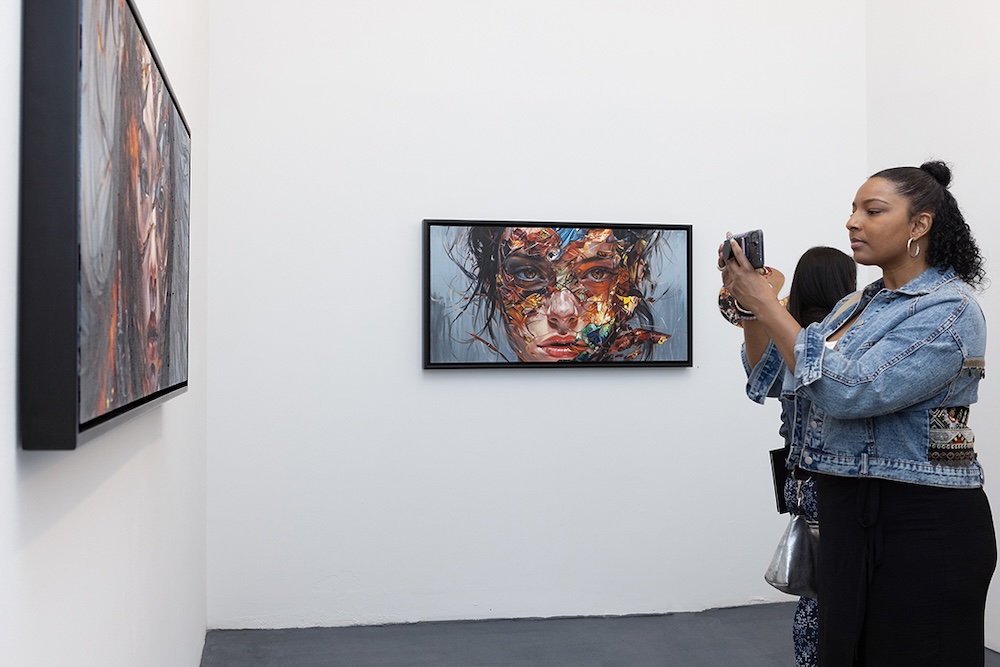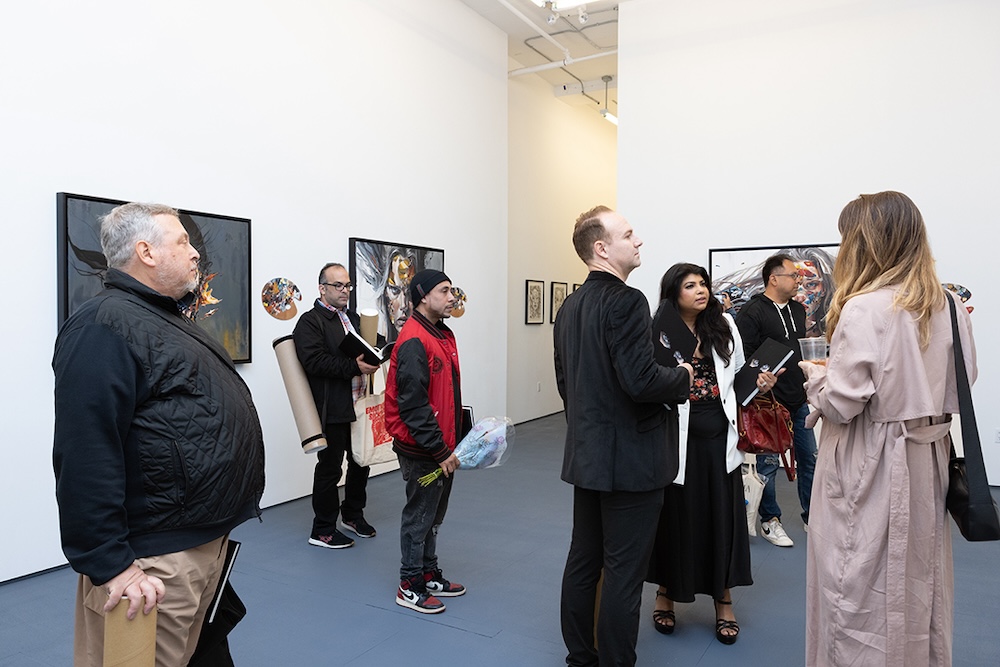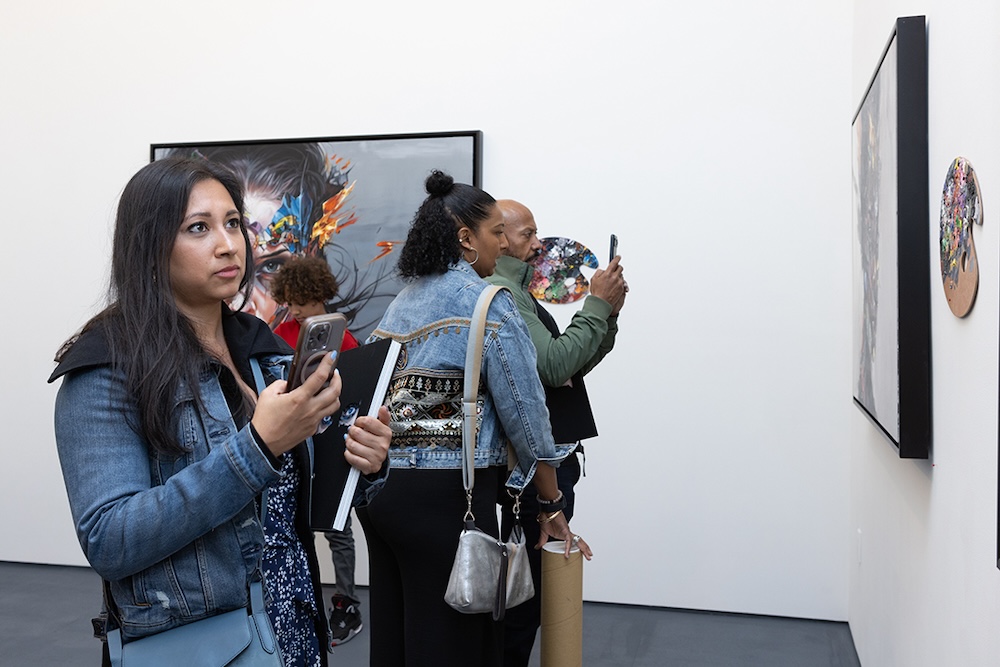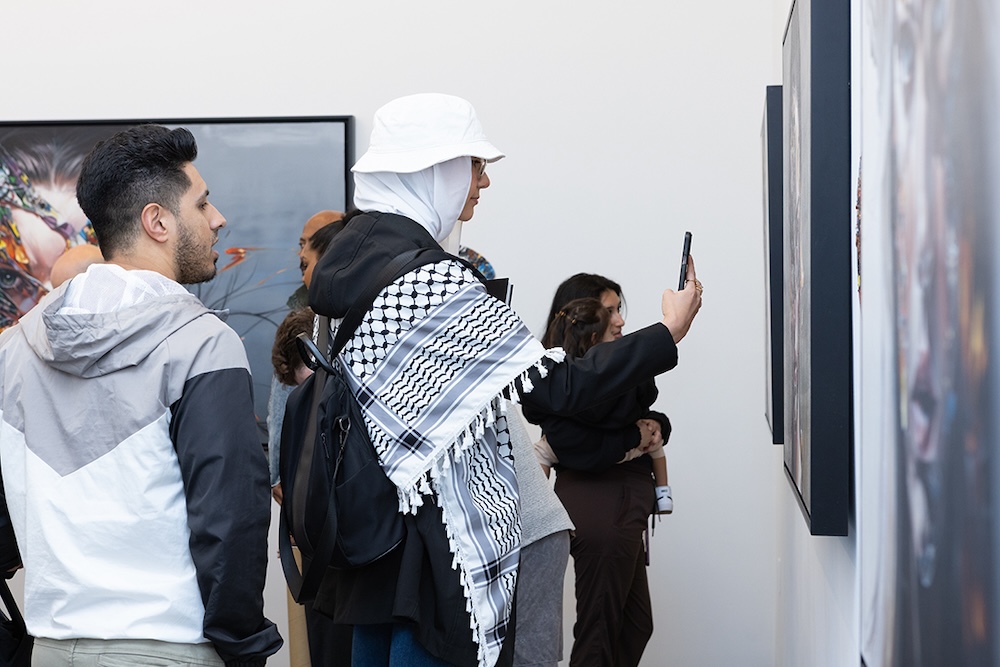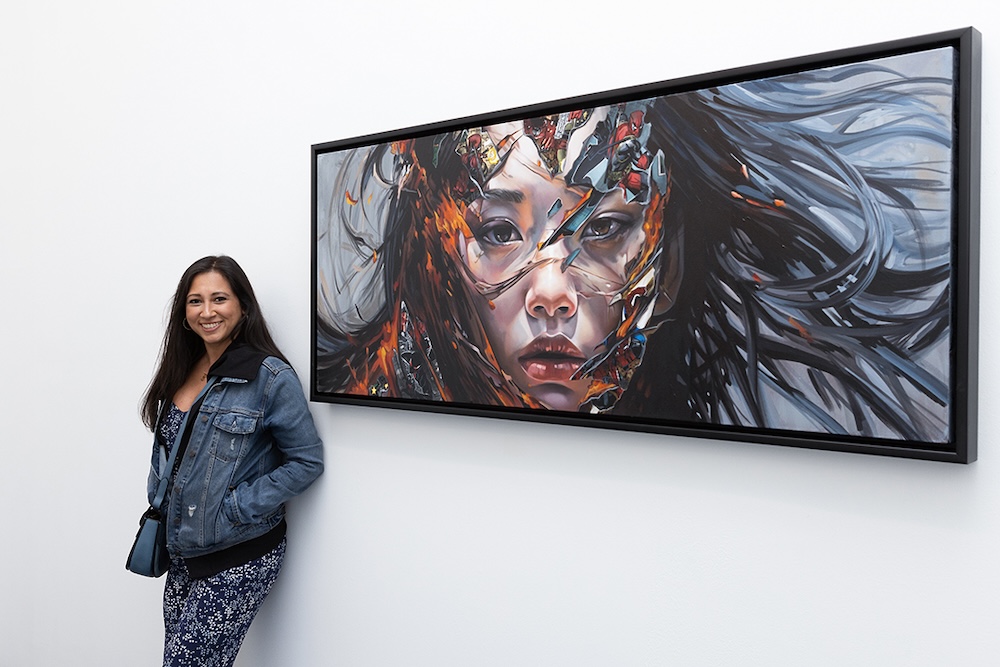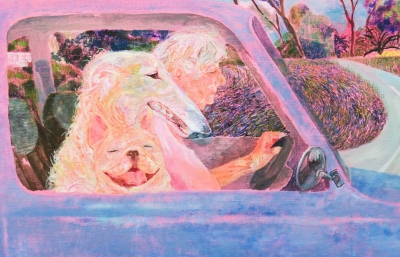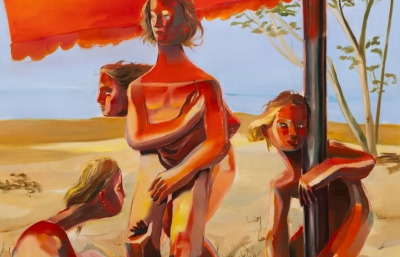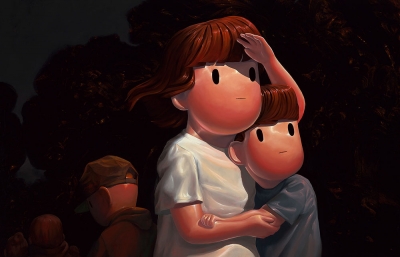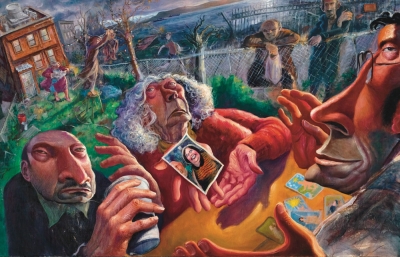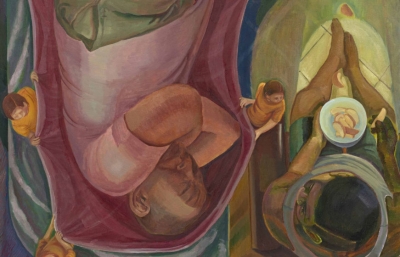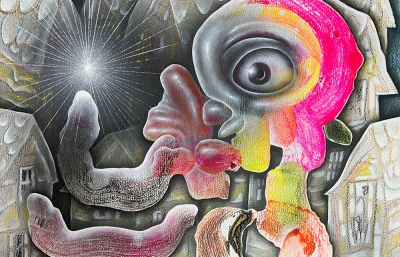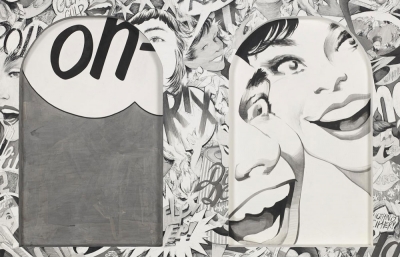Is true freedom attainable? It’s a lofty question, but one artist Sandra Chevrier hasn’t shied away from in her years of artmaking. Merging hyperreal portraits of women with the pop-aesthetic of comic book superheroes, Chevrier’s paintings offer a fresh perspective on liberation and the powers women have to destroy their cages; to sing for freedom.
Chevrier’s solo exhibition Birds on Cages at Harman Projects NYC is the newest presentation of paintings and mixed-media works in her Cages series, a growing body of work that highlights how grand societal expectations of women actually limit their actions and desires. Before the exhibition opened, she caught up with Harman Projects to discuss freedom, power, constraint, and where those themes show up in her work.
Harman Projects: Something you mentioned about this latest series of works is that the cages are almost completely burned away, giving the figures a renewed sense of freedom. Can you expand on this idea and the evolution of liberation throughout this series?
Sandra Chevrier: What distinguishes this new body of work from previous ones is the emphasis on the transformative power of liberation. There is a noticeable shift in the narrative, focusing on the struggle within the cage and on the triumph of liberation. I have captured a unique moment of action and stillness within the frames of liberation. The movements and fiery energy of the explosions are frozen in time, creating dynamic tension and anticipation. While the chaos of the explosions persists, the portraits remain poised and composed, on the verge of their final step toward freedom.
In these latest artworks, I explore how people want to be completely free yet are limited by our bodies and the world around us. We all want to make choices without anyone telling us what to do. Our bodies have inescapable limits. While we can move around and do things independently, we are still tied to how our bodies work. As such, this idea of total freedom is a big goal that we cannot quite reach. My art shows the struggle between wanting to be completely free and being held back by our bodies and minds. Through my art, I want people to think about how we balance wanting to be free with the realities of our bodies and minds. My artworks tell a story of how we always strive for freedom, even though we constantly face limits and restrictions.
What makes you feel free?
The times I feel the most free often involve overcoming personal challenges, letting go of self-imposed limits, and being true to myself or maybe just getting older. Through art, self-discovery, or personal growth, these moments of feeling freer have boosted
my self-awareness and confidence. They have influenced my art and inspired me to explore freedom and independence. However, the feeling of breaking free can be fleeting. There are moments of introspection and good days where the sense of freedom feels within reach, only to be weighed down by the heaviness of the world, which includes our learned habits, perceptions, limitations, and expectations. The doors of the cells open and close abruptly. The question arises: Is true freedom attainable?
In this series of paintings, the women’s “masks” burn away. Are the women setting fire to the mask? I guess I’m wondering how much agency these women have in their own liberation.
In the “storyline’’ of my work, the women represent power and strength in freeing themselves. Burning the masks is a deliberate choice to break away from what society expects and from things that hold them back. I'm trying to depict independent women who have control over their lives, taking charge of their stories and reclaiming who they are with their strengths and flaws. While outside influences can shape our lives, women are seen as active forces for change, showing their power in working towards freedom. Burning the masks—the cages—is a strong way for them to free themselves and feel empowered, highlighting their independence and strength in creating their own paths. For me, burning the “Cages” is a personal symbol akin to the historical significance of "burning the bras." Just as burning bras symbolized women's liberation and defiance of traditional gender roles in the past—we’ve come a long way since then—burning the "Cages" represents my own rebellion against confinement and limitations, asserting my freedom and autonomy in my artistic expression.
Since you started the series many years ago, various laws have been passed restricting women’s freedoms. So, I wonder about your perspective on the role of the individual attempting to break free and the constraints and challenges society imposes on them that are out of their control.
Unfortunately, we will always deal with challenges from society, such as laws that will limit our freedom, especially for women. Even when we take two steps forwards, it seems like we are always brought one step back. Now, more than ever, we find that our voice matters and that collectives and individuals can make a difference by speaking up against unfair rules, supporting equality, and fighting for human rights. We can create a more fair and inclusive society by working together to change these laws and promote freedom for everyone.
It takes courage, unity, and a belief in justice and equality to make a positive impact. It is a constant fight, and it is sad to see that the ones who want to impose these constraints are also humans.
How do you find your power?
Discovering my power is a journey of learning about myself and feeling strong. It involves being true to myself, knowing who I am, and being able to bounce back from tough times. My power comes from knowing my strengths, what matters to me, and what I love doing. This helps me face challenges, overcome obstacles, and go after my dreams with belief and determination. By tapping into my inner strength, creativity, and confidence, I can use my personal power to make a difference, grow, and bring positivity to my life and the world. I find my strength in being a good mom, following my passions, enjoying life, and making the most of great opportunities.
You also mentioned that you have been exploring some new techniques lately. Can you tell us what you have been experimenting with? What have you learned from those experiments?
I have always enjoyed exploring this series in different ways using various materials and techniques. The concept of the mask has been a part of my drawings since my teenage years, leading to a continuous evolution and exploration. But I have to admit that in the past years, I was forced to work on different techniques because my arm got hurt. I developed tendinitis after working too much on an easel. This challenge pushed me to find new ways to express myself and adapt my creative process. While I have a passion for using inks and watercolors, where I can control the outcome to a certain extent but also embrace the unpredictability of water, I have now started experimenting with different types of paper. Using various papers, particularly rice paper, adds depth and a unique personality to my work. I fell in love with rice paper's delicate and beautiful imperfections, which I showcased for the first time last year at the Art on Paper Fair with Harman Projects in NYC.
On another note, the ongoing exploration of my evolving series “Cages’’ has sparked my interest in playing with textures and relief. I am even considering incorporating a sculptural or 3D element into the masks in my art, which I also explored a bit in the past. I am excited to experiment more in the coming years and hope to achieve interesting results!
Moving forward, I will continue to explore the theme of liberation through this series by experimenting with new techniques, visual metaphors, symbolic imagery, and expressive narratives. I will also continue to play with dichotomies, as I have come to understand that nothing is purely good or bad; everything exists on a spectrum. These dichotomies add depth and contrast to my artistic exploration. I aim to make the viewer feel understood and seen, recognizing that we all inhabit human bodies and minds on a planet where Light and Darkness, Love and Loss, Hope and Despair, and Dreams and Reality are intertwined as friends and foes.
I remember you saying that you often find it challenging to let go when you’re making work, and that starting this series marked a turning point in how you constrained yourself. Considering how detailed the portraits of these women are, how do you balance control and chaos in your practice? Do you make room for both?
Creating detailed artwork with precise control helps me relax and find peace in my mind. It's a form of meditation that keeps me balanced and calm. The meticulous attention to detail in my portraits and the countless hours in front of the easel enable me to focus and immerse myself in the work, offering a form of therapy.
Each exhibition I work on contains a noticeable variety. For example, in the 2021 Oslo exhibition titled “Cages and the Unbearable Gift of Freedom,” I showcased a mix of raw, textured, and dynamic pieces in black and white using pastels, inks, and graphite alongside refined and detailed canvases. This contrast between the polished portraits and the more expressive works allowed me to experiment with different techniques, such as using various papers, inks, and watercolors. By combining highly controlled pieces with more spontaneous creations, I keep my creativity in balance.
I’m also wondering about the titles of the works in this series. Reading them in sequence almost feels like a poem.
I did not sell my soul to the devil
on the edge of silence
under the jeers of angels
How do you title your pieces? What’s behind these poetic names?
The titles are crafted with intention and poetic resonance—my work demands to be dissected beyond its surface value. I think these titles add another layer of depth and meaning to the artwork. On certain pieces, you’ll find a torn quote from a comic book at the bottom of a piece that serves as a guide to the viewer. Each title is carefully selected to evoke emotion, provoke thought, and provide a glimpse into the narrative and themes explored in the piece. Also, writing the titles in French is a nod to the fact that I am French Canadian and that I pay tribute to my first language. I draw inspiration from various sources: my sketchbook is filled with hundreds of titles, some of which are words that come to mind, lyrics from a song, or quotes from a book.
Finally, the exhibition is titled Birds on Cages. Can you say more about the title of this exhibition?
It's a title I’ve had in mind for a long time and I’ve recently created a logo with just a bird perched on the top of a cage.
During my college days, I came across the work of photographer Henri Cartier-Bresson. I have always detested the sight of birds in cages, robbed of their ability to fly, rendering their wings useless. I was inspired by a portrait he did titled Portrait of Henri Matisse (Vence, France), where a man sits on a chair in a small room surrounded by empty cages and birds perched on top of them. Seeing the birds now resting on the roof of a cage symbolizes ultimate freedom. I created a logo for my company, which aligns well with the dichotomy of my work and inspired the title of this particular exhibition. In this latest series, the “Cages” dissolve, explode, and burn with intensity, leaving behind remnants that symbolize the turbulent journey of breaking free from confinement. While traces of the masks remain visible, there is a sense of renewal and freedom rather than suffocation. The artworks exude a palpable sense of satisfaction, exhilaration, and power, akin to a bird soaring above its former cage, unshackled from restraint.
Birds On Cages is on view at Harman Projects NYC (54 Ludlow Street) through May 25th, 2024.

